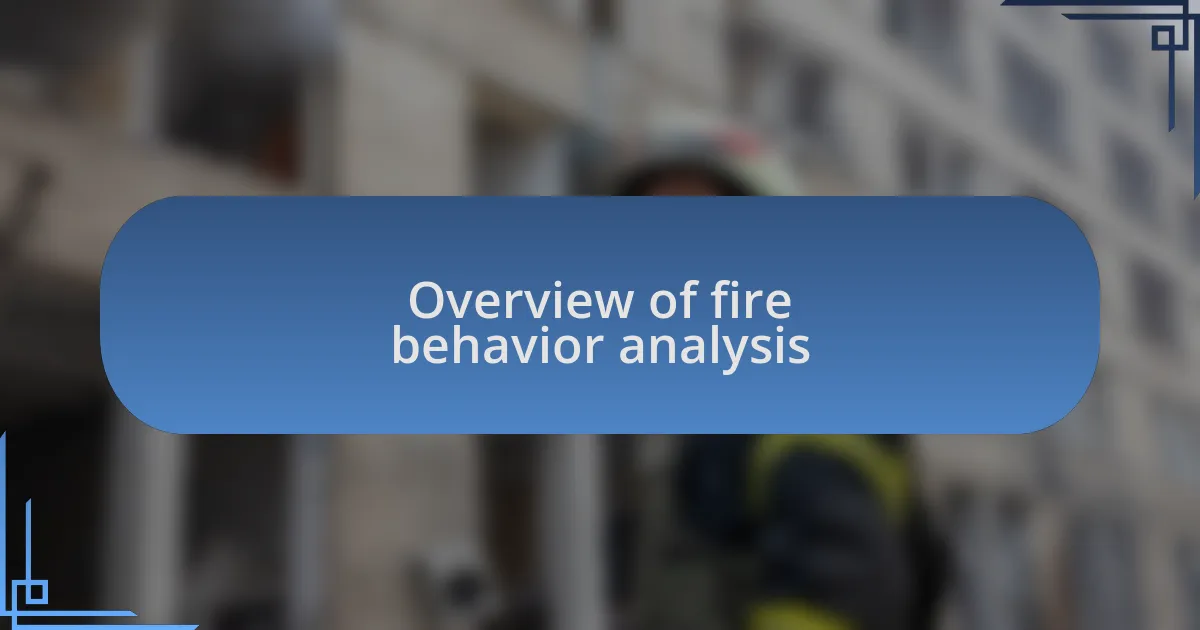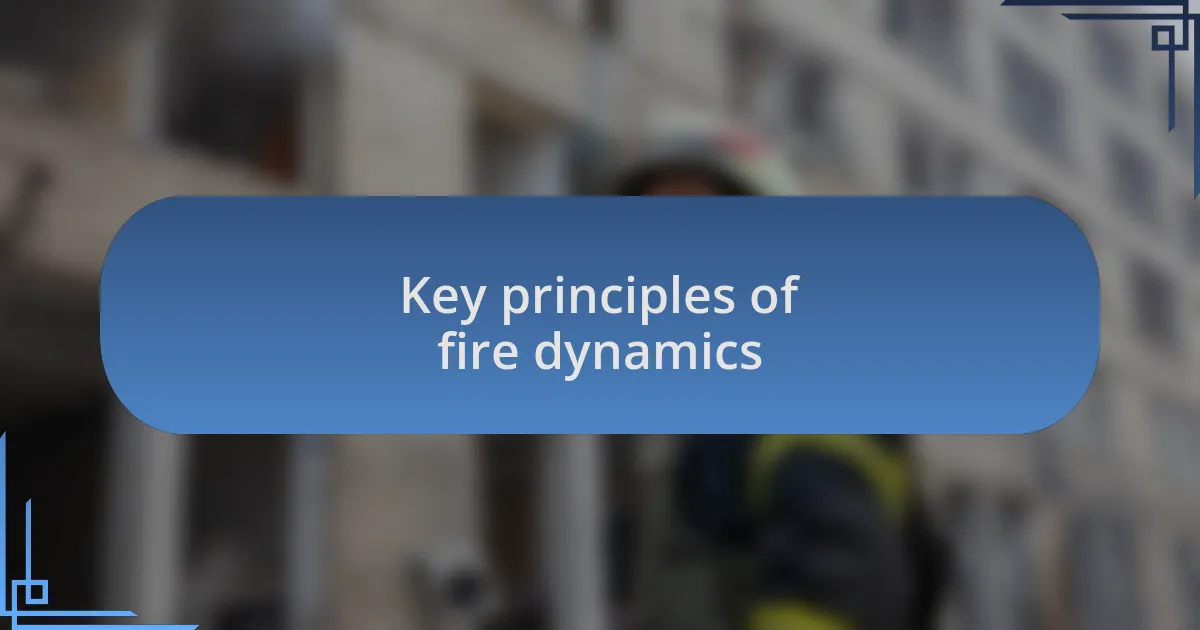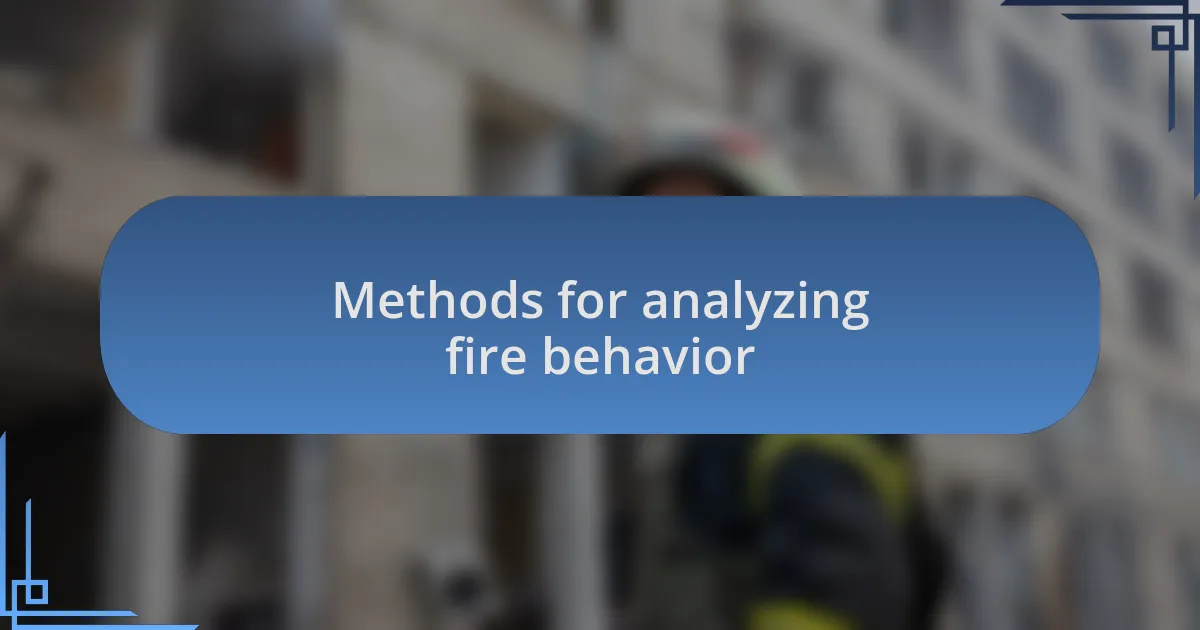Key takeaways:
- Fire behavior analysis is essential for understanding ignition, spread, and extinguish mechanisms, requiring both knowledge and intuition.
- The fire triangle (heat, fuel, oxygen) is a fundamental concept that informs firefighting strategies and tactics.
- Methods for analyzing fire behavior include fire modeling software, field observations, and reviewing incident reports to improve situational awareness and tactics.
- Emotional factors affect decision-making in firefighting, highlighting the need for continuous education and realistic training scenarios.

Overview of fire behavior analysis
Fire behavior analysis is a fascinating yet complex field that dives into understanding how and why fires ignite, spread, and extinguish. As I’ve learned through my own training, every fire tells a story influenced by fuel types, weather conditions, and topography. Have you ever watched a fire jump from one tree to another? It’s a thrilling reminder of the unpredictable nature of wildfires and the crucial need for analysis.
In my experience, fire behavior analysis requires not just knowledge but also intuition. I vividly remember a training drill where we had to predict the path of a fire based on wind patterns and fuel loads. It was eye-opening to see how our predictions matched the real fire’s behavior, enhancing my understanding of the science behind fire dynamics. This hands-on learning made me appreciate how vital accurate analysis is for effective firefighting strategies.
Understanding fire behavior also means recognizing the emotional impact on both firefighters and communities. The fear, urgency, and adrenaline can cloud judgment, making accurate analysis even more crucial. It makes me wonder: how can we prepare ourselves better to face such extraordinary challenges? In my experience, continuous education and real-life training scenarios have proven essential in honing our skills to analyze fire behavior effectively.

Key principles of fire dynamics
When I first delved into the principles of fire dynamics, one concept that stood out was the fire triangle, which consists of heat, fuel, and oxygen. Without any one of these elements, a fire cannot exist. This fundamental understanding has shaped my approach during training, reminding me of times when simple changes—like removing fuel or controlling ventilation—actually turned the tide in a simulated fire scenario.
Another critical principle is the idea of heat transfer, which includes conduction, convection, and radiation. I remember one challenging exercise where we located ourselves strategically to minimize heat exposure while maximizing our effect on the fire. It reinforced how heat can travel in unexpected ways, and knowing this allows us to position ourselves wisely during actual incidents. Have you ever thought about how the heat from a fire can influence not only its spread but also the safety of everyone involved?
Lastly, the role of smoke in fire dynamics can’t be overlooked. I once experienced a training session where thick smoke filled the environment, and it was a sobering realization of how quickly visibility can vanish. Understanding smoke behavior—like how it rises or flares out—has dramatically shifted my perspective on navigating through smoke-filled spaces. It begs another question: how do we balance the urgency of firefighting with the need for safety, especially when visibility is compromised?

Methods for analyzing fire behavior
Analyzing fire behavior requires a blend of observation and scientific principles. One method I often relied on is the application of fire modeling software, which simulates how a fire spreads based on specific variables like materials and environmental conditions. During one training session, I watched as we altered parameters and observed drastically different outcomes, reinforcing the importance of data in understanding fire dynamics. It made me wonder: how often do we underestimate the impact of small changes on fire behavior?
Another critical method is the use of field observations during live fire exercises. I vividly recall a night training session where we studied flame height and color, which indicated fuel types and availability of oxygen. As the flames danced against the backdrop of darkness, it became clear how these visual cues can inform tactical decisions. Have you ever considered how a firefighter’s ability to interpret these signs can enhance situational awareness and safety?
Additionally, reviewing incident reports is invaluable for understanding past fire behaviors. One time, I participated in a debrief after a major incident, analyzing everything from weather conditions to fire spread patterns. It struck me how these reflections not only aid in improving tactics but also foster a culture of learning and adaptation within our team. Isn’t it fascinating how each report can transform our approach to future fires and enhance safety for all?